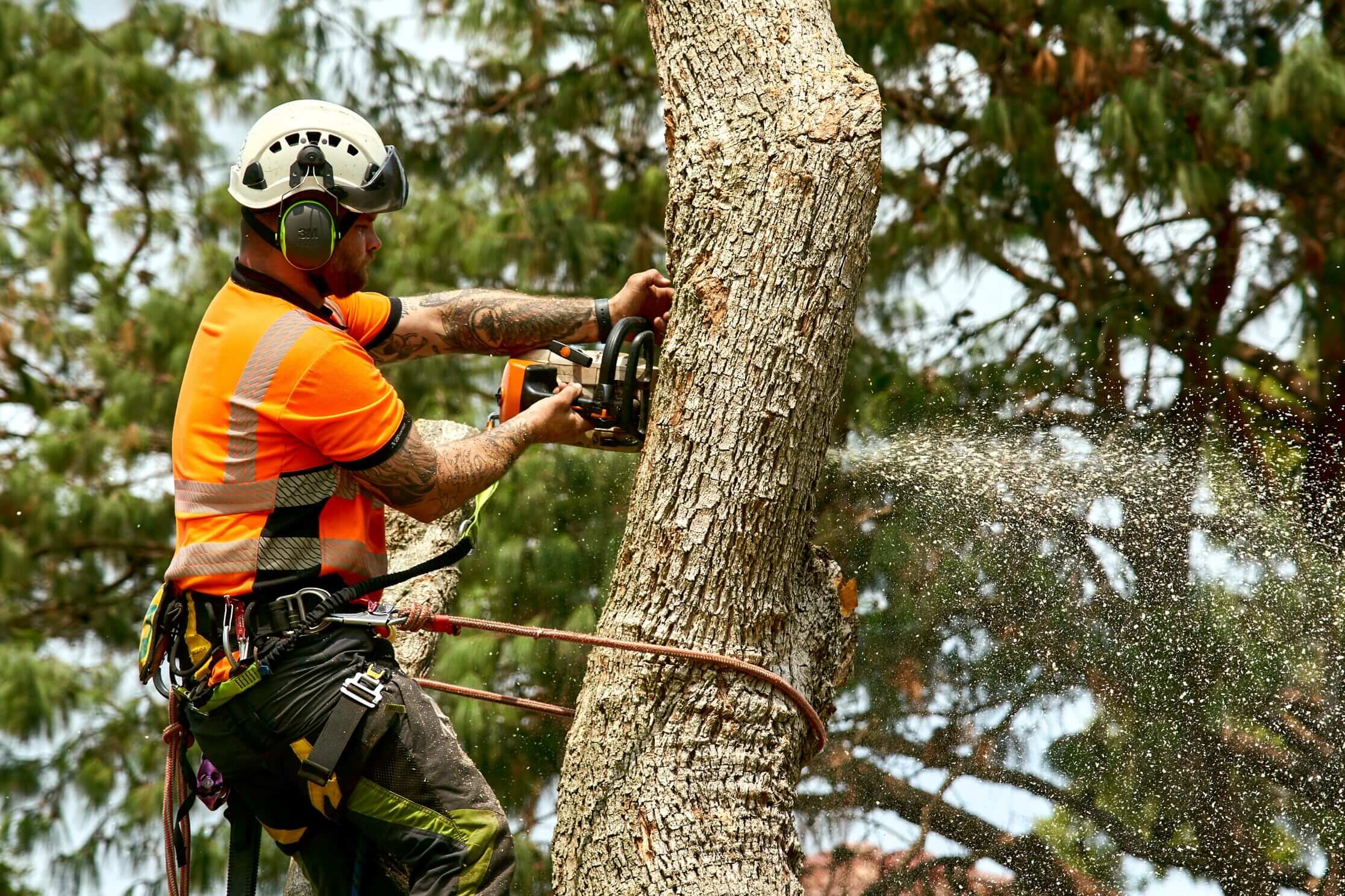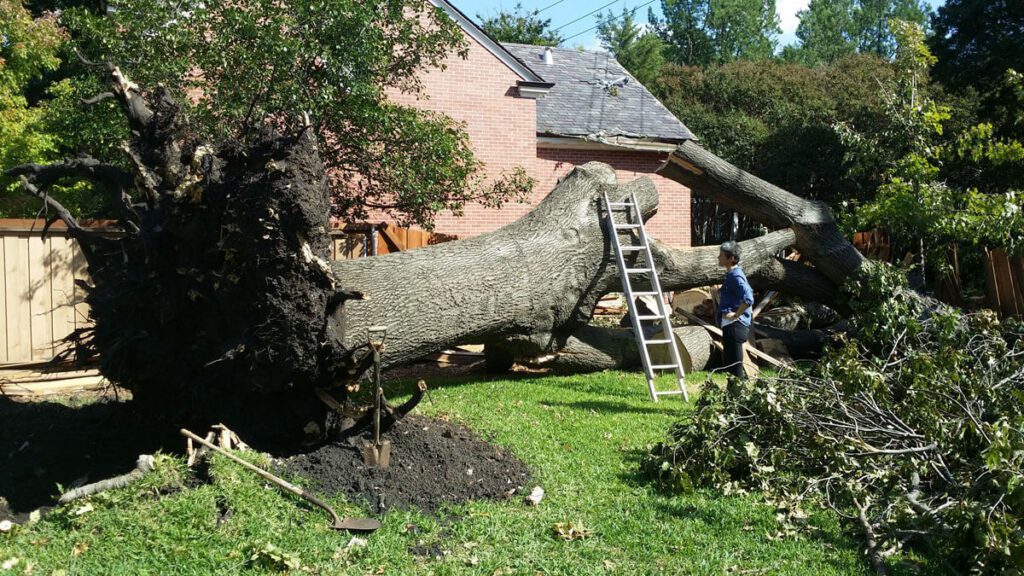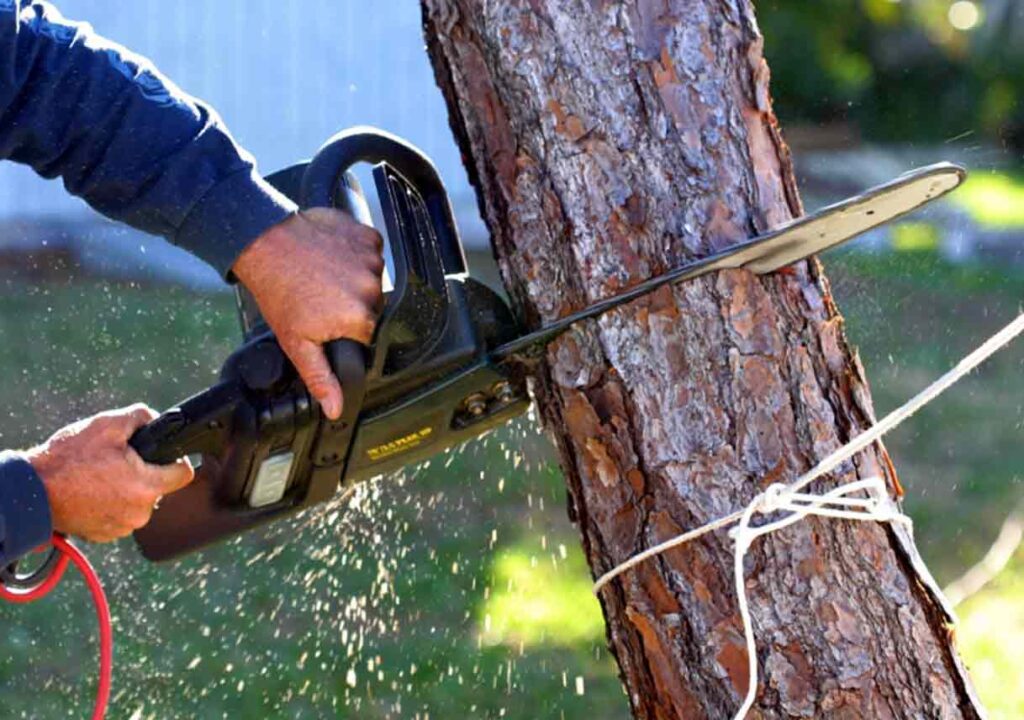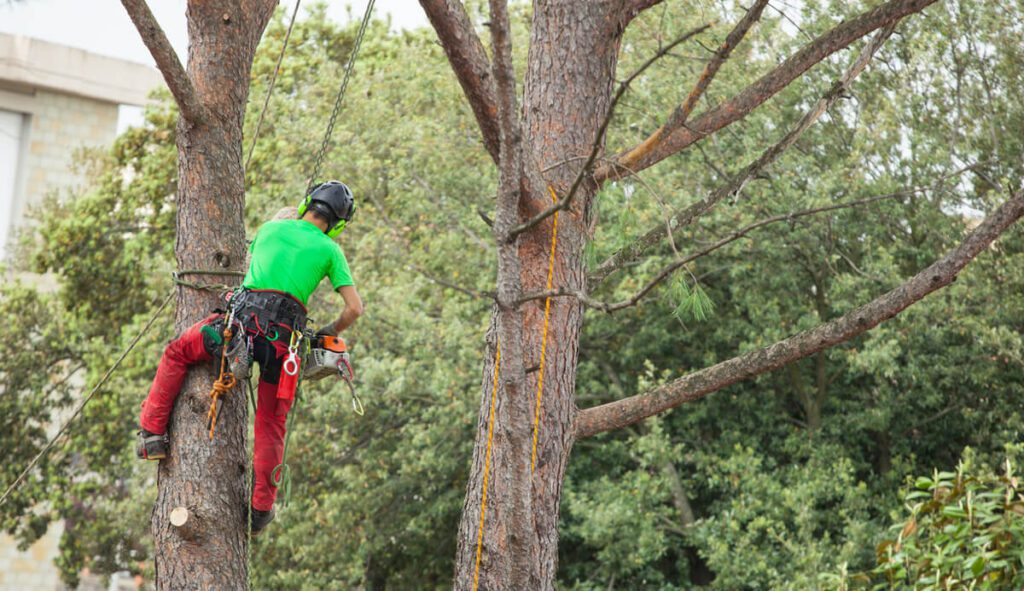Tree Lopping vs. Tree Removal: Understanding the Key Differences

Tree lopping and tree removal are two common practices in the field of arboriculture. Both serve the purpose of managing trees, but they differ in their approach and outcomes. In this article, we will delve into the definitions, processes, key differences, and pros and cons of tree lopping and tree removal to gain a comprehensive understanding of each.
Defining Tree Lopping and Tree Removal
In order to comprehend the dissimilarities between tree lopping and tree removal, it is essential to establish what each term entails.
When it comes to tree care and maintenance, there are various techniques and practices that tree removal company employ to ensure the health and safety of trees. Two common methods used are tree lopping and tree removal.
What is Tree Lopping?
Tree lopping, also known as tree trimming or tree pruning, is the deliberate cutting and removal of specific parts of a tree, such as branches or foliage. This practice is carried out with the objective of enhancing the tree’s shape, maintaining its overall health, or managing its growth.
When it comes to tree lopping, it is important to note that it should be done carefully and with the guidance of a professional arborist. Improper or excessive lopping can cause significant damage to the tree, leading to decay, disease, and even death. Therefore, it is crucial to hire a skilled arborist who understands the proper techniques and has the necessary equipment to carry out the task safely and effectively. Learn more tips for maintaining tree health.

Tree lopping can serve several purposes. One common reason for lopping is to remove dead or diseased branches that may pose a risk to people or property. By removing these branches, the overall safety of the tree and its surroundings can be improved. Additionally, lopping can help shape the tree, ensuring that it grows in a desirable manner and fits well within its environment.
Furthermore, tree lopping can be beneficial for managing the growth of a tree. By selectively removing certain branches, arborists can control the size and spread of the tree, preventing it from interfering with power lines, buildings, or other structures. This practice is particularly important in urban areas where space is limited and trees need to be carefully managed to coexist with human infrastructure.
What is Tree Removal?
On the other hand, tree removal involves the complete eradication of a tree from its location. This is usually done when a tree poses a safety hazard, is diseased beyond recovery, or when its presence conflicts with construction plans or the overall aesthetic of the area.
Tree removal is a complex and potentially dangerous task that should only be undertaken by experienced professionals. It requires careful planning, specialized equipment, and adherence to safety protocols to ensure the successful and safe removal of the tree.
There are several reasons why tree removal may be necessary. In some cases, a tree may be severely diseased or infested with pests, making it impossible to save or treat. In such instances, removing the tree is the best course of action to prevent the spread of disease or pests to other nearby trees.
Additionally, trees that are structurally compromised or have suffered significant damage from storms or other natural disasters may need to be removed to eliminate the risk of falling branches or complete tree failure. This is especially important in areas where the tree is in close proximity to buildings, roads, or high-traffic areas.
Furthermore, tree removal may be required when new construction or landscaping projects are planned. In these cases, the tree may need to be removed to make way for new structures or to create a more desirable landscape design.
It is important to note that tree removal should always be considered as a last resort. Arborists will typically explore other options, such as tree lopping or tree preservation techniques, before recommending removal. The decision to remove a tree should be made after careful consideration of its value, condition, and potential impact on the surrounding environment.
The Process Involved in Tree Lopping and Tree Removal
The execution of tree lopping and tree removal follows a specific procedure to ensure the safety and efficiency of the task. However, there are several additional steps and considerations that go into these processes, making them more complex than they may initially seem.
Steps in Tree Lopping
1. Assessment:
A thorough evaluation of the tree is performed to determine which parts need to be pruned or removed. This assessment involves not only considering the tree’s overall health and structural integrity but also taking into account any potential risks or hazards associated with the tree’s location.
2. Planning:
A plan is devised to ensure the lopping process is executed in a controlled manner. This plan includes determining the best approach for accessing the tree, as well as considering factors such as the presence of power lines, nearby structures, and the surrounding environment.
3. Pruning:
Tree loppers carefully cut away branches or foliage according to the predetermined plan. This process requires skill and precision to ensure that the tree’s health and aesthetics are preserved while also addressing any safety concerns.
4. Clearing:
Once the lopping is complete, the debris is collected, and the area is cleared of any potential hazards. This includes removing fallen branches, leaves, and other debris that may have accumulated during the pruning process.
5. Tree Health Assessment:
After the lopping is finished, arborists may conduct a follow-up assessment to evaluate the impact of the pruning on the tree’s overall health and to ensure that no further action is required.

Steps in Tree Removal
1. Evaluation:
Expert arborists assess the tree to decide if removal is necessary. This evaluation takes into account various factors, such as the tree’s condition, its location, and any potential risks it poses to people or property.
2. Obtaining Permissions:
Depending on the location and local regulations, permits might be required before tree removal can proceed. Arborists work closely with local authorities to obtain the necessary permissions and ensure compliance with any legal requirements.
3. Planning and Safety Measures:
A comprehensive plan is formulated to ensure the safe removal of the tree, considering factors such as nearby structures, power lines, and potential obstacles. Specialized equipment and techniques are employed to minimize the risk of accidents and property damage during the removal process.
4. Felling:
The tree is brought down in a controlled manner using specialized equipment and techniques. This process requires careful coordination and skill to ensure that the tree falls in the desired direction and does not cause any harm to people or property.
5. Stump Removal:
If desired, the stump of the tree can be removed as well, making way for future landscaping or construction projects. This process may involve grinding the stump down to below ground level or completely excavating it, depending on the specific requirements.
6. Cleanup:
The area is cleared of all debris and left in a clean state. This includes removing all branches, logs, and other remnants of the tree, as well as raking and leveling the ground to restore the area’s appearance.
7. Tree Replacement:
In some cases, tree removal is followed by the planting of a new tree to maintain the ecological balance and aesthetic appeal of the area. Arborists may recommend suitable tree species and assist in the replanting process.
As you can see, tree lopping and tree removal involve a series of steps that require careful planning, expertise, and adherence to safety protocols. By following these procedures, arborists ensure that the task is carried out efficiently and with minimal impact on the surrounding environment.
Key Differences Between Tree Lopping and Tree Removal
While both tree lopping and tree removal involve the management of trees, several distinctions set them apart.
Tree lopping and tree removal are two common practices in arboriculture that serve different purposes and have varying impacts on tree health and safety considerations.
Purpose and Goals
Tree lopping aims to shape the overall appearance of a tree, improve its health, or manage its growth patterns. It is often done to maintain the aesthetic appeal of trees in residential or commercial landscapes. By selectively removing branches, tree lopping can enhance the tree’s form and structure, making it more visually appealing.
In contrast, tree removal focuses on eliminating a tree that is no longer desired or poses a threat to its surroundings. This could be due to factors such as disease, structural instability, or encroachment on buildings or power lines. Tree removal is typically carried out when other options, such as pruning or tree lopping, are not sufficient to address the issue.
Impact on Tree Health
Tree lopping, when performed correctly, can promote the health of a tree by removing diseased or weak branches, improving airflow, and sunlight penetration. By eliminating branches that are competing for resources or impeding the tree’s natural growth, tree lopping can enhance the overall vitality of the tree.
Conversely, tree removal eliminates the tree entirely and may be the last resort for severely damaged or hazardous specimens. While tree removal may be necessary in certain situations, it is important to consider the ecological impact and potential loss of habitat when removing a tree.
Safety Considerations
Tree lopping is generally considered less risky and disruptive compared to tree removal. As tree lopping involves selectively removing branches, it requires less equipment and is less likely to cause damage to surrounding structures or landscapes. However, it is still important to hire a professional arborist who is trained in proper pruning techniques to ensure the safety and health of the tree.
On the other hand, tree removal involves felling and potentially dealing with large trees, which requires advanced skills, equipment, and safety precautions to avoid accidents and property damage. It is crucial to hire experienced tree removal specialists who are equipped to handle the complexities and potential hazards associated with removing a tree.
In conclusion, while tree lopping and tree removal are both methods of tree management, they serve different purposes and have distinct impacts on tree health and safety considerations. It is important to consult with a qualified arborist to determine the most appropriate course of action for your specific tree care needs.

Pros and Cons of Tree Lopping and Tree Removal
Advantages of Tree Lopping
- 1. Aesthetics: Tree lopping helps shape trees to enhance their visual appeal in the landscape.
- 2. Health Improvement: By removing dead or diseased branches, tree lopping can improve the overall health and vitality of the tree.
- 3. Space Management: Lopping allows for better utilization of space and can prevent trees from encroaching on buildings or infrastructure.
Disadvantages of Tree Lopping
- 1. Regrowth Issues: Improper lopping techniques can lead to excessive regrowth, making it necessary to frequently repeat the lopping process.
- 2. Stress on Trees: Poorly executed lopping can cause stress to the tree, making it more susceptible to disease and pests.
- 3. Loss of Shade and Privacy: Lopping can reduce the shade provided by a tree and compromise privacy.
Advantages of Tree Removal
- 1. Elimination of Hazards: Tree removal ensures the complete eradication of potentially hazardous or structurally compromised trees.
- 2. Construction and Landscaping Flexibility: Removing a tree opens up opportunities for new construction projects or landscaping changes.
- 3. Disease Prevention: Removing severely diseased trees prevents the spread of pests and diseases to other healthy trees in the vicinity.
Disadvantages of Tree Removal
- 1. Loss of Tree Benefits: Removing a tree means losing the environmental benefits it provides, such as air purification and shade.
- 2. Potential Damage: If not executed properly, tree removal can result in damage to nearby structures or landscapes.
- 3. Cost: Tree removal is generally more expensive than tree lopping due to the complex equipment and expertise required.
In conclusion, tree lopping and tree removal are two distinct practices in the field of arboriculture. Understanding their differences, processes, and the pros and cons associated with each is crucial when making decisions about tree management. Whether it is for aesthetic enhancement, health improvement, or safety concerns, choosing the right approach for your specific situation will ensure the long-term well-being of your trees and the surrounding environment.

Leave a Reply